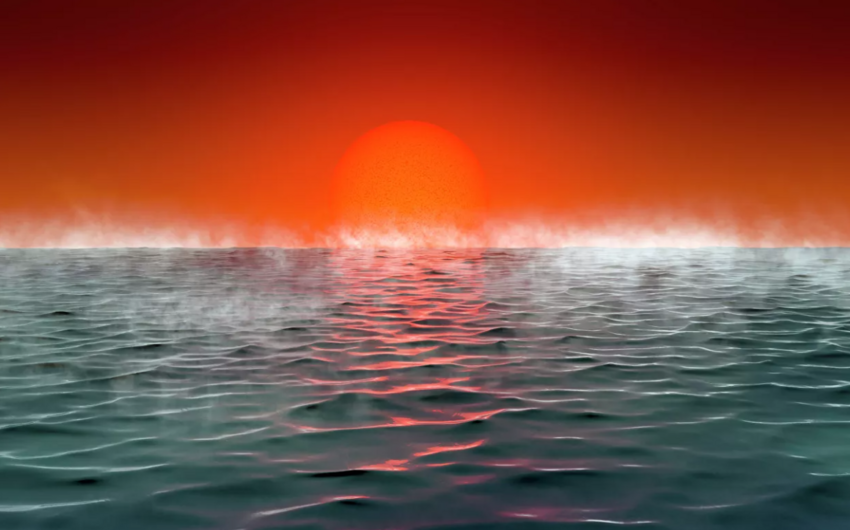A new class of exoplanet very different to the Earth, but which could support life, has been identified by British astronomers, which could significantly accelerate the search for life outside our Solar System, Report informs referring to Phys.org.
In the search for life elsewhere, astronomers have mostly looked for planets of a similar size, mass, temperature, and atmospheric composition to Earth. However, astronomers from the University of Cambridge believe there are more promising possibilities out there.
The researchers have identified a new class of habitable planets, dubbed ‘Hycean’ planets - hot, ocean-covered planets with hydrogen-rich atmospheres - which are more numerous and observable than Earth-like planets.
The researchers say the results, reported in The Astrophysical Journal, could mean that finding biosignatures of life outside our Solar System within the next two or three years is a real possibility.
“Hycean planets open a whole new avenue in our search for life elsewhere,” said Dr. Nikku Madhusudhan from Cambridge’s Institute of Astronomy, who led the research.
Many of the prime Hycean candidates identified by the researchers are bigger and hotter than Earth but still have the characteristics to host large oceans that could support microbial life similar to that found in some of Earth’s most extreme aquatic environments.
These planets also allow for a far wider habitable zone, or ‘Goldilocks zone,’ compared to Earth-like planets. This means that they could still support life even though they lie outside the range where a planet similar to Earth would need to be to be habitable.
Thousands of planets outside our Solar System have been discovered since the first exoplanet was identified nearly 30 years ago. The vast majority are planets between the sizes of Earth and Neptune and are often referred to as ‘super-Earths’ or ‘mini-Neptunes’: they can be predominantly rocky or ice giants with hydrogen-rich atmospheres, or something in between.
Most mini-Neptunes are over 1.6 times the size of Earth: smaller than Neptune but too big to have rocky interiors like Earth. Earlier studies of such planets have found that the pressure and temperature beneath their hydrogen-rich atmospheres would be too high to support life.
The Cambridge team identified a sizeable sample of potential Hycean worlds, which are prime candidates for detailed study with next-generation telescopes, such as the James Webb Space Telescope (JWST), which is due to be launched later this year. These planets all orbit red dwarf stars between 35-150 light years away: close by astronomical standards. Planned JWST observations of the most promising candidate, K2-18b, could lead to the detection of one or more biosignature molecules.


 https://static.report.az/photo/258f5efa-da07-3ed6-8d35-318019ee0e7e.png
https://static.report.az/photo/258f5efa-da07-3ed6-8d35-318019ee0e7e.png

